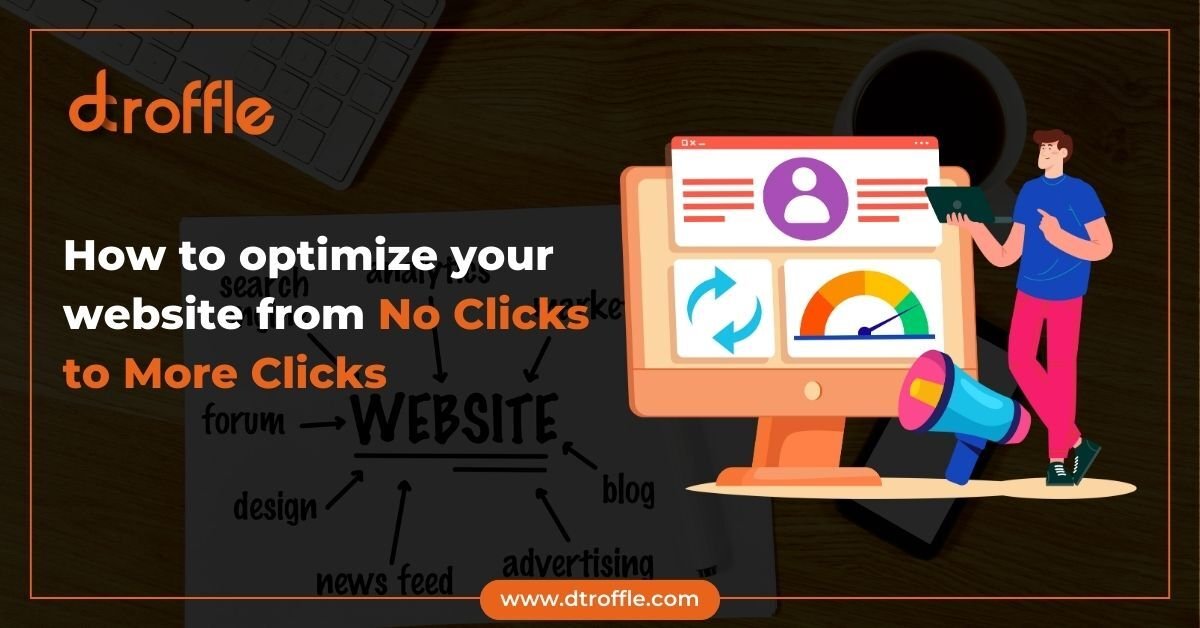Getting traffic to your website is just the first step; converting that traffic into meaningful clicks and engagement is where the real challenge lies. Here’s a guide to help you transform your website from receiving no clicks to attracting and retaining more visitors.
1. Understand Your Audience
Define Your Target Audience:
- Demographics: Age, gender, location, etc.
- Psychographics: Interests, behaviours, and preferences.
Conduct Market Research:
- Surveys and Feedback: Use tools like Google Forms or SurveyMonkey.
- Analytics: Utilize Google Analytics and social media insights to understand user behaviour.
2. Enhance Your Website’s SEO
Keyword Research:
- Use tools like Google Keyword Planner or Ahrefs to find relevant keywords.
- Focus on long-tail keywords that match user intent.
On-Page SEO:
- Title Tags and Meta Descriptions: Craft compelling and keyword-rich titles and descriptions.
- Header Tags: Organize content with H1, H2, and H3 tags.
- Internal Linking: Improve navigation and distribute link equity.
Technical SEO:
- Mobile-Friendliness: Ensure your site is responsive and performs well on mobile devices.
- Page Speed: Optimize images, use caching, and leverage content delivery networks (CDNs).
3. Improve User Experience (UX)
Simplify Navigation:
- Use a clean, intuitive menu structure.
- Implement a search function to help users find what they need quickly.
Optimize Design and Layout:
- Visual Hierarchy: Highlight important elements using size, colour, and placement.
- Call-to-Action (CTA): Make CTAs clear and compelling.
Reduce Bounce Rate:
- Ensure fast load times.
- Provide relevant and engaging content.
4. Create High-Quality Content
Valuable Content:
- Blog Posts and Articles: Address common questions and provide solutions.
- Infographics and Videos: Use visual content to convey complex information easily.
Regular Updates: Keep your content fresh and relevant with regular updates and new posts.
Content Optimization:
- Use keywords naturally within your content.
- Include engaging multimedia elements.
5. Leverage Social Proof
Testimonials and Reviews:
- Showcase positive feedback from customers.
- Use case studies to highlight successful outcomes.
Trust Signals: Display security badges, certifications, and awards.
Social Media Integration: Share content and engage with users on social platforms.
6. Utilize Analytics and Tracking
- Monitor Performance: Track metrics such as click-through rates (CTR), conversion rates, and user behaviour.
- A/B Testing: Experiment with different headlines, CTAs, and designs to see what works best.
- Adjust Strategies: Use insights from analytics to make informed decisions and continuous improvements.
7. Invest in Paid Advertising
- PPC Campaigns: Run targeted pay-per-click (PPC) campaigns using Google Ads or Bing Ads.
- Social Media Ads: Utilize platforms like Facebook, Instagram, and LinkedIn to reach your audience with targeted ads.
- Retargeting: Use retargeting ads to re-engage visitors who have previously interacted with your site.
8. Build a Strong Online Presence
- Email Marketing: Collect email addresses and send regular newsletters and promotional offers.
- Community Engagement: Participate in forums, blogs, and industry groups to increase visibility.
- Partnerships and Collaborations: Collaborate with influencers or other businesses to expand your reach.
Conclusion
Optimizing your website is an ongoing process that involves understanding your audience, enhancing your SEO, improving user experience, creating high-quality content, and leveraging various strategies to drive more clicks. By consistently applying these practices, you can increase your website’s traffic, engagement, and, ultimately, its success.









